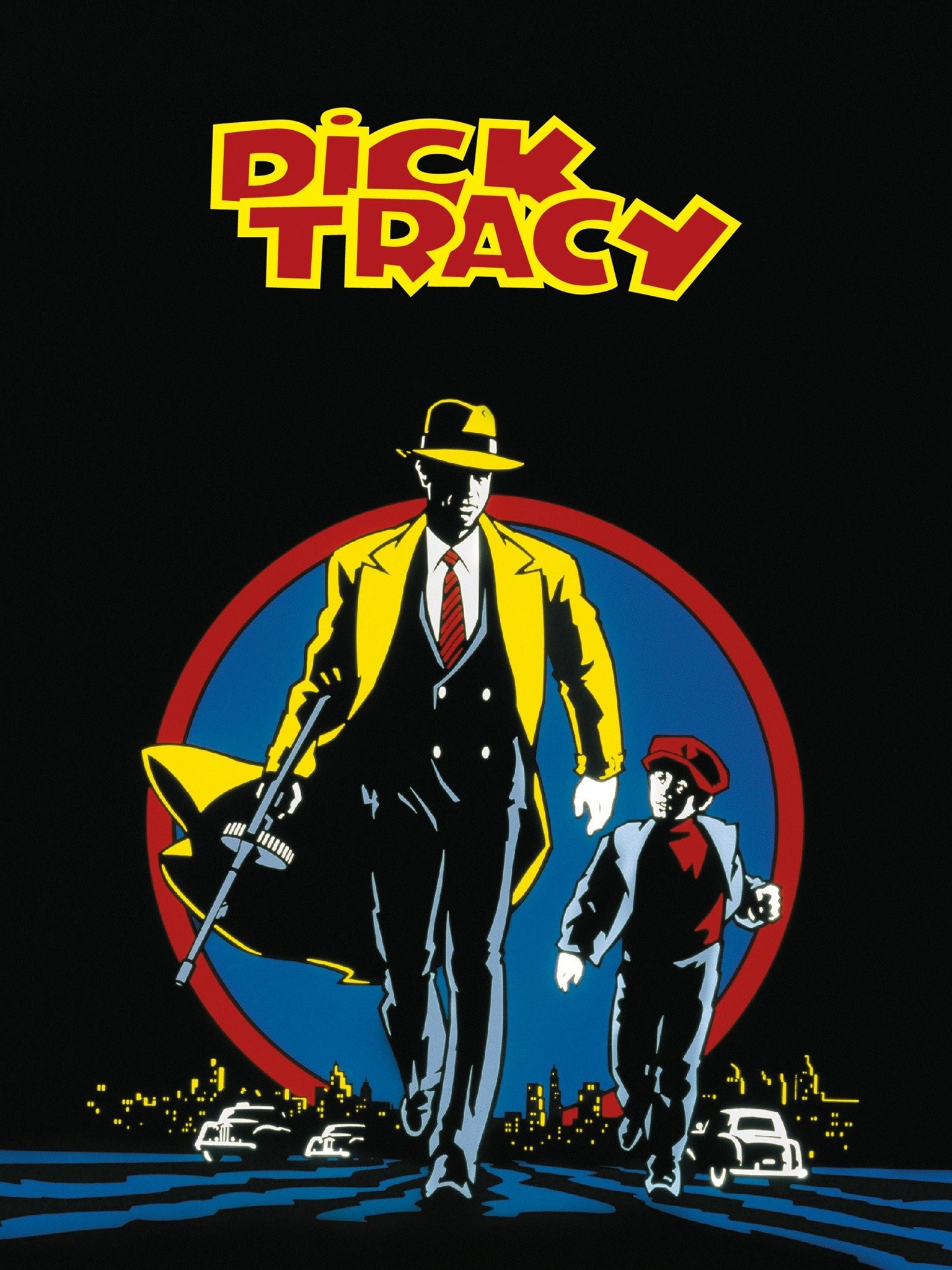“Dick Tracy” (1990): A Visual and Stylistic Marvel in Retrospect – Film Review

Warren Beatty’s “Dick Tracy” stands as a unique cinematic endeavor, marrying the colorful vibrancy of comic strips with the gritty sensibility of film noir. Released in 1990, this adaptation of Chester Gould’s classic comic strip was a bold experiment in style, storytelling, and marketing. Despite its commercial success and a slew of marketing tie-ins, including a notable promotion with McDonald’s, “Dick Tracy” has often been considered underappreciated in the annals of superhero cinema. This review delves into the aspects that make “Dick Tracy” a film worthy of reevaluation and appreciation for its pioneering contributions to the genre.
Behind the Mask: Production and Design Innovations
One of the most striking aspects of “Dick Tracy” is its visual aesthetic. Production designer Richard Sylbert and costume designer Milena Canonero worked meticulously to bring the vivid, primary-colored world of the comic strip to life. The film’s palette, dominated by bold reds, yellows, and blues, creates a living comic book that predated the later successes of similarly stylized films like “Sin City” and “300.”
The decision to film on sound stages allowed the creators to meticulously control the environment, ensuring that every frame could be composed with the precision of a comic panel. This control extended to the makeup department, where John Caglione Jr. and Doug Drexler transformed actors into the exaggerated villains of Gould’s imagination. Al Pacino’s transformation into Big Boy Caprice and William Forsythe’s into Flattop Jones are standout examples of makeup’s ability to contribute to character and narrative.
A Star-Studded Ensemble
Warren Beatty not only directed but starred as the titular detective, bringing a blend of old-school charm and determined grit to the role. The cast also included Madonna as Breathless Mahoney, whose performance added a layer of sultry intrigue and complexity to the film. With supporting roles filled by talents such as Al Pacino, Dustin Hoffman, and James Caan, “Dick Tracy” boasted an ensemble that elevated the material through sheer star power and dedication to the film’s exaggerated, comic book reality.
Musical Underpinnings and Soundtrack Success
Another layer of “Dick Tracy’s” appeal comes from its soundtrack, particularly Stephen Sondheim’s original songs, which won an Academy Award for Best Original Song with “Sooner or Later (I Always Get My Man),” performed by Madonna. The soundtrack blended period-appropriate jazz influences with contemporary pop, creating an auditory experience that complemented the film’s visual flair.
Marketing Genius and Cultural Impact
“Dick Tracy’s” release was accompanied by an unprecedented marketing blitz, with tie-ins ranging from McDonald’s promotions to action figures. This marketing strategy, while successful in making “Dick Tracy” a commercial hit, perhaps also contributed to its perception as more of a marketing phenomenon than a cinematic one. Over time, however, the film’s artistic merits and daring aesthetic choices have garnered a more appreciative evaluation from both critics and audiences.
Legacy and Reappraisal
Today, “Dick Tracy” stands as a testament to the potential of comic book adaptations to be both faithful to their source material and innovative in their cinematic expression. Its bold use of color, pioneering makeup effects, and integration of music into the narrative laid the groundwork for the visually driven, genre-blending blockbusters that populate today’s cinematic landscape.
In an era where comic book movies often strive for realism and moral complexity, “Dick Tracy” reminds us of the power of stylization and the appeal of a straightforward hero facing off against a gallery of grotesques. Its unique aesthetic, combined with solid performances and a memorable soundtrack, ensures that “Dick Tracy” remains not just a relic of its time but a vibrant, engaging work that continues to resonate.
Reflecting on “Dick Tracy”
“Dick Tracy” deserves recognition not just for its commercial success and ambitious marketing but for its artistic achievements and the way it pushed the boundaries of what a comic book movie could be. It’s a film that marries style and substance, offering a template for how to bring the exaggerated world of comics to life on the screen. In doing so, it stands as a vibrant, enduring piece of cinema that showcases the depth and diversity of the comic book genre.




